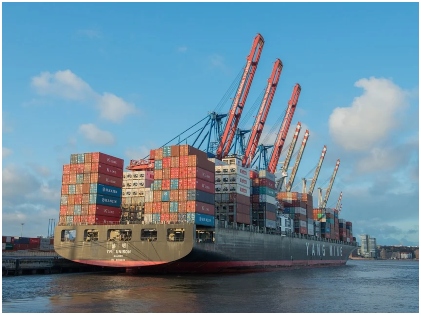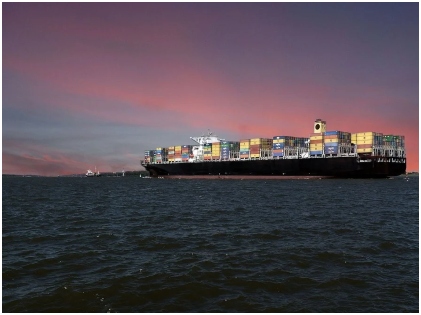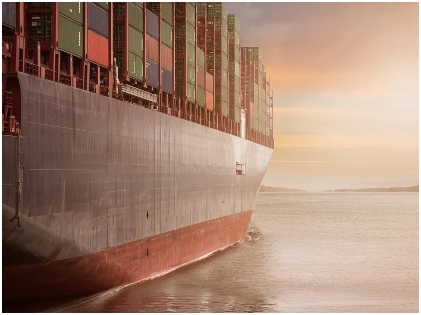 On its way to Rotterdam, the container ship Ever Given (IMO 9811000) cruised via the Suez Canal on February 23 before its unfortunate accident. Unfortunately, the canal authorities had to halt the transit of all other vessels traveling via the canal.
On its way to Rotterdam, the container ship Ever Given (IMO 9811000) cruised via the Suez Canal on February 23 before its unfortunate accident. Unfortunately, the canal authorities had to halt the transit of all other vessels traveling via the canal.
The ship lost control because of the intervention of high winds and bad weather. However, the ship's technical manager stated that there weren't any mechanical or engine failures that is disrupting its progress. The Suez Canal Authority, on March 25, announced the temporary shutdown of navigation through the canal.
The Suez Canal Crisis
The current disruption of vessel traffic through the Suez Canal has a significant impact on the economy. Europe, the Mediterranean, Eastern Africa, the Middle East, and the Indian Subcontinent remain most affected. That is because it has led to a delay in the arrival and delivery of cargo at various ports worldwide. The recent container port congestion, because of the COVID-19 pandemic-related supply chain changes, has been expected. However, the cargo disruption has affected every type of cargo and ship using the Canal. Not surprisingly, the supply-chain woes have continuously started mounting, not only leaving anything right from cars to clothing.
The Economic Impact
 About 13 percent of world trade goes through the Suez Canal. Even if the operations get disrupted for a week or so, it will leave supply chains struggling to work via the accumulated backlog. The ships, containers, and goods are not in a place where we need them. So, the knock-on impact is going to be for several months and not just weeks. While the European countries are most impacted, the United States will also face an impact in its trade if the crisis resolution takes time.
About 13 percent of world trade goes through the Suez Canal. Even if the operations get disrupted for a week or so, it will leave supply chains struggling to work via the accumulated backlog. The ships, containers, and goods are not in a place where we need them. So, the knock-on impact is going to be for several months and not just weeks. While the European countries are most impacted, the United States will also face an impact in its trade if the crisis resolution takes time.
The Semiconductor Crisis
The COVID-19 pandemic has already led to a shortage of supply for semiconductors. Add to this a fire in the automotive-chip factory in Japan further impacted the chip supply chain. And the Suez Canal crisis has only aggravated it. Experts predict a massive shortage that would impact almost every industry ranging from cars, smartphones, PCs, Tablets, TVs, and healthcare equipment. The major ramping up of the orders caught the chip manufacturers unprepared.
The Countries Impacted
The retail and manufacturing sectors in Europe have been the most affected. The spread of the delays expanded to other regions because of delayed arrival times in the long trade routes. And the dominoes effect will affect North American businesses too. The missed arrivals of vessels scheduled to arrive in Asia and the Indian Subcontinent traveling across the Atlantic Ocean through the Suez Canal will also face the heat.
There are over 200 ships awaiting transit. There have been as many as 700,000 -foot equivalent units (TEU) of container cargoes, a variety of imports, and exports affecting the businesses in the Northern Hemisphere. About 25 percent of a month's maritime import and export volumes on key trade routes are on a halt giving rise to mitigation costs!
The Large-Scale Impact
Due to the strong global shipping demand, rates will continue to increase further, and shippers will have to pay more. And with the inventories running much below the desired levels in varied sectors such as retail, this will strain the global trading system. It extended the time it takes to conduct the businesses to achieve the stipulated case of inventories.
The disruptions can last a little longer, so they will continue to pique the world's attention. The recovery time and economic impacts of the Canal operations will depend on the duration of the blockage. If the disruption extends to the last much into next week, vessels will certainly have to divert into the much longer and more expensive 'Cape Route' via the Southern Cape Horn. This will increase the journey by 10-30 days to a voyage. And that is mostly because of the origin and destination of the vessel. Ultimately, long-term disruption to the Suez Canal would mean using alternative routes such as Cape Route and Panama Canal routes for specific voyages.
If the blockage continues to drag on, the world might have to find alternative sea routes. And one possible alternative at this point is to go around the Cape of Good Hope, entailing at least two weeks to journeys and extra fuel costs to the business.



